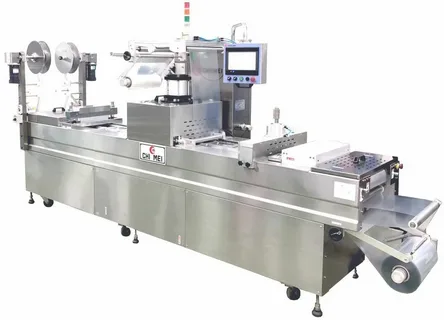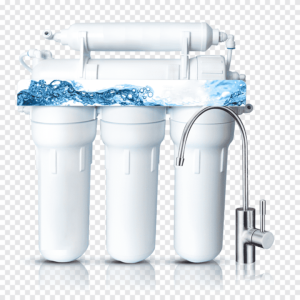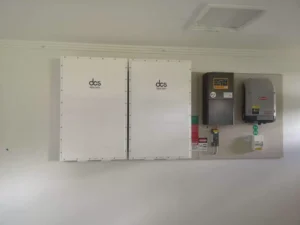In today’s fast-paced world, where efficiency and sustainability have become cornerstones of modern living, preserving food has never been more crucial. The vacuum-packing machine stands out as a pivotal tool in achieving this goal. By effectively extending the shelf life of food, reducing waste, and maintaining nutritional quality, these machines have become indispensable in home kitchens and professional food management. But what makes a vacuum packing machine so vital? Let’s delve into its significance and how it can transform the way we manage food.
Understanding the Basics of Vacuum-Packing Machines
Vacuum-packing machines extract air from a package to create a vacuum-sealed environment, slowing down oxidation and microbial growth that cause food spoilage. These machines typically include a vacuum pump, sealing bar, and a chamber or an external hose to accommodate different packaging types.
Modern vacuum-packing machines range from portable models for home use to industrial-grade versions for large-scale operations. Technological advancements have led to features such as adjustable settings for various food types, from delicate produce to robust meats, making these machines adaptable to multiple needs.
Benefits of Using a Vacuum-Packing Machine
A vacuum-packing machine provides numerous benefits that enhance food preservation and overall storage efficiency. One of the primary advantages is extended shelf life. By removing air from the packaging, vacuum-sealing significantly slows down the oxidation process, which can cause food to spoil. This is particularly beneficial for perishable items such as meats, vegetables, and fruits, allowing consumers to buy in bulk without worrying about waste.
Vacuum-packing helps prevent freezer burn, a common issue when storing food in the freezer. The airtight seal protects the food from exposure to air, preserving its texture, flavour, and nutritional quality. Another notable benefit is the ability to marinate food more effectively. The vacuum-sealing process allows marinades to penetrate deeper into the food, enhancing flavours in a fraction of the time compared to traditional marinating methods.
Vacuum-packing machines promote organisation and save space in storage. Compressing items into compact packages makes it easier to manage freezer and pantry space. These machines are not limited to food preservation; they can also be used for non-food items, protecting clothing, documents, and seasonal decorations from moisture and damage.
Choosing the Right Vacuum-Packing Machine for Your Needs
Choosing the suitable vacuum-packing machine involves assessing several vital factors to meet your needs. Consider the type of vacuum sealer that best fits your usage. There are two main types: external vacuum sealers, ideal for occasional home use, and chamber vacuum sealers, which are more suitable for commercial applications or frequent use. Chamber sealers can handle liquids and oversized items more efficiently.
Evaluate the machine’s size and capacity. If you plan to seal large quantities of food or bulk items, a larger model with a higher wattage is essential. Consider the machine’s sealing mechanism; some models offer adjustable sealing levels, allowing you to customise the seal based on the food type. Portability is another factor to consider.
If you have limited kitchen space or plan to use the sealer on the go, look for a compact, lightweight model. Check for additional features such as automatic sealing, built-in cutters for bag preparation, and compatibility with different bag sizes. By carefully considering these factors, you can choose a vacuum-packing machine that meets your needs, enhances food preservation, and improves your overall food management experience.
Tips To Properly Use a Portable Vacuum Sealer
Using a portable vacuum sealer effectively can enhance food storage and preservation. Here are some tips to ensure optimal performance:
- Choose the Right Bags: Use vacuum-sealer bags specifically designed for your model, as they provide better sealing and durability. Avoid regular plastic bags, which may not seal properly.
- Prepping Food: Before sealing, ensure food items are clean and dry. Excess moisture can interfere with the sealing process. For liquids, consider freezing them in a flat container before vacuum sealing.
- Proper Placement: When placing items in the bag, ensure enough space at the top to seal. Avoid overfilling, as this can prevent a proper seal.
- Sealing Technique: If using a manual vacuum sealer, follow the manufacturer’s instructions for sealing. For automatic models, simply press the vacuum and seal button. Ensure the lid is closed correctly for an effective seal.
- Store Correctly: After sealing, vacuum-sealed bags should be stored flat in the freezer or refrigerator. This helps them maintain their shape and makes them easier to stack and organise.
By following these tips, users can maximise the effectiveness of their portable vacuum-sealer, prolonging food freshness and minimising waste.
Applications of Vacuum Food-Sealer Machines
Vacuum food-sealer machines are versatile tools that offer a range of applications beyond simple food storage. Here are some notable uses:
Food Preservation
The primary application of a vacuum food-sealer machine is preserving food. By removing air from packaging, these machines significantly extend the shelf life of perishable items, preventing spoilage and freezer burn. This primarily benefits meats, vegetables, and fruits, allowing consumers to buy in bulk and reduce waste.
Sous Vide Cooking
Vacuum-sealed bags are ideal for sous vide cooking, which involves cooking food in a temperature-controlled water bath. The vacuum seal ensures even cooking and helps retain moisture and flavour, resulting in perfectly cooked dishes.
Marinating Foods
A vacuum food-sealer machine can enhance the marinating process. The marinade can penetrate the food more effectively by removing air and infusing flavours in less time than traditional methods.
Bulk Meal Prep
A vacuum food-sealer machine is invaluable for meal-prep individuals. It allows users to portion out meals, seal them for freshness, and store them in the freezer. This ensures quick access to healthy meals while minimising waste.
Storage of Non-Food Items
Beyond food, vacuum food-sealer machines can store non-food items such as clothing, documents, and seasonal decorations. By sealing these items in airtight bags, users can protect them from moisture, dust, and damage, keeping them pristine.
Vacuum-Sealing and Sustainability: A Perfect Match
Vacuum sealing is increasingly recognised as a sustainable practice in food management, significantly contributing to environmental conservation. By removing air from packaging, vacuum-sealing extends the shelf life of food products, reducing spoilage and waste. Approximately one-third of the food produced globally is wasted, and vacuum sealing can help combat this issue by preserving freshness for extended periods.
This benefits consumers by minimising the need for frequent grocery shopping and lessens the strain on food production systems. Moreover, vacuum sealing allows for efficient storage, optimising space in refrigerators and freezers. Compressing food items reduces the overall volume of storage needed, leading to energy savings in refrigeration.
This efficiency translates to lower energy consumption and a reduced carbon footprint. In addition to food preservation, vacuum-sealing can extend the life of non-food items, such as textiles and electronics, protecting them from moisture and damage. This versatility promotes a more sustainable lifestyle by encouraging the reuse of products.
Maintenance and Care for Your Vacuum-Packing Machine
Proper maintenance and care for a vacuum-packing machine are essential to ensure its longevity and optimal performance. Here are some critical tips to keep your machine in excellent condition:
- Regular Cleaning: Clean the vacuum-packing machine after each use by wiping the exterior and interior surfaces with a damp cloth. Pay special attention to the sealing area, as food particles can accumulate there, potentially affecting the machine’s performance.
- Check Sealing Gaskets: The sealing gaskets are critical for maintaining an airtight seal. Inspect them regularly for signs of wear or damage. If the gaskets appear cracked or misshaped, replace them promptly to ensure the machine functions correctly.
- Use Compatible Bags: Always use vacuum bags designed specifically for your machine. Using incompatible bags may cause improper sealing or damage to the machine.
- Store Properly: Store the vacuum-packing machine in a cool, dry place when not in use. Avoid exposure to moisture, which can damage the internal components.
- Avoid Overloading: Do not overload the vacuum chamber; this can strain the machine and lead to malfunction. Follow the manufacturer’s guidelines for optimal filling amounts.
By following these maintenance tips, users can extend the lifespan of their vacuum-packing machine and ensure consistent, high-quality sealing for all their food preservation needs.
Vacuum Food Sealer Machine: Boosting Food Storage Efficiency
A vacuum food sealer machine revolutionises food storage by significantly enhancing organisation and space efficiency. Vacuum-sealed packages occupy less space than traditional storage methods, allowing you to maximise your refrigerator and freezer capacity. This organised approach makes it easier to locate items quickly, reducing the time spent rummaging through your fridge or freezer. One key benefit is the ability to pre-portion meals.
By vacuum-sealing individual portions, you can streamline meal preparation and ensure consistent portion sizes. This is particularly advantageous for meal preppers and families with varied dietary needs, allowing for quick, hassle-free meal planning and preparation. The compact nature of vacuum-sealed packages also facilitates better stacking, reducing clutter and making the most available space. This efficiency is invaluable for households with limited storage, ensuring that every inch is utilised effectively.
Vacuum-sealed foods retain their freshness longer, minimising the need for frequent grocery shopping and thereby saving time and resources. For those who purchase bulk, vacuum-sealing allows for efficient long-term storage without sacrificing food quality. By keeping your food organised and extending its shelf life, a vacuum food-sealer machine optimises storage and contributes to a more sustainable and cost-effective lifestyle.
Conclusion
In conclusion, a vacuum-packing machine is essential for enhancing food freshness and extending shelf life in modern food management. This technology helps prevent spoilage and retains flavour and nutrients by effectively removing air and sealing products. The benefits extend beyond preserving food; it also promotes waste reduction and efficient storage solutions. Embracing this innovative method empowers individuals and businesses to optimise food quality and ensure a sustainable approach to food management, leading to healthier choices and improved culinary experiences.
FAQs
How does a vacuum-packing machine work?
A vacuum-packing machine places the item in a plastic bag or container, uses suction to remove air, and seals the package. The machine creates a tight seal, which prevents air from re-entering the bag and helps maintain the quality of the contents.
What are the benefits of using a vacuum-packing machine?
The benefits of a vacuum-packing machine include:
- Extended shelf life for perishable items.
- Reduced freezer burn on frozen foods.
- Space-saving storage.
Additionally, vacuum packing can prevent contamination and preserve the flavour and nutrients of the food.
Can a vacuum packing machine be used for non-food items?
Yes, a vacuum packing machine can also be used for non-food items. It is effective for sealing documents, clothing, and other sensitive materials to protect them from moisture, dust, and damage.
How do you maintain a vacuum-packing machine?
Maintaining a vacuum-packing machine involves regularly cleaning the sealing area and checking for gasket wear. Keeping the machine dry and storing it in a relaxed, clean environment is also essential to ensure optimal performance.
Where can a vacuum-packing machine be purchased?
A vacuum-packing machine can be purchased at various retailers, including kitchen supply stores, online marketplaces, and home improvement centres. Many brands offer models suitable for home and commercial use, catering to different needs and budgets.
| Related Business Listings |
| Contact Directory |
| Local Business Profiles |




